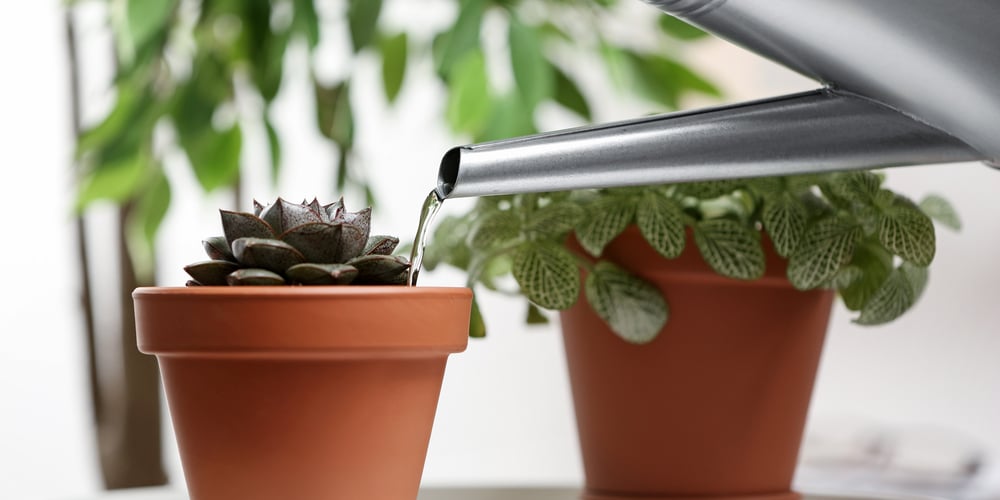Root rot is a fairly common plant disease that comes from constantly wet or waterlogged soil. Correcting your watering habits and knowing when to give your plants water are just some of the things you can do to avoid this problem. Is root rot contagious? If so, how do you prevent root rot from spreading?
We answer all these questions and more below.
Can Root Rot Spread Through Plants?

Root rot is contagious, meaning it can spread from one plant to another. Fungi in the soil can transfer through the air via spores or insects. Gardeners can also spread them unknowingly when they handle infected soil or when they don’t disinfect dirty gardening tools.
The fungal disease often spreads from an infected plant to others nearby. You may notice a group of plants exhibiting the same symptoms, such as wilting and yellowed leaves, as well as brown or reddish roots that are mushy instead of firm. Insects that carry the spores can fly or jump from one plant to another, and sometimes the fungi are carried by strong winds.
It’s worth noting that root rot can transfer regardless of plant type or species. For example, root rot in your favorite succulent can infect other nearby plants, such as your snake plant.
The disease can be difficult to spot early on because all the action happens deep in the soil and roots, and some of the signs are associated with a lack of nutrients and underwatering.
How Do You Prevent Root Rot From Spreading?
Isolate and Repot
Prevention is often the best cure for plant diseases, and root rot is no exception. Once you suspect a plant is suffering from root rot, isolate it from the rest of your plants and remove the plant from its container.
Take a look at the roots and see if it’s soft and mushy and has a sickly brown or rust-like color. Using a sterilized pair of small garden shears, cut away the dead roots and dispose of them properly so your other plants won’t be affected.
Allow the plant’s roots to dry for several days, then repot using a fresh new medium. Make sure the soil is well-draining and not overly wet. Your plant may or may not recover depending on how many roots are left or how severe the damage is. Starting over and disposing of your root rotted plant is also a good idea.
Water Only When the Plant Needs It
Watering a plant can be a tricky thing because there are some that like to have a constantly moist medium, while others prefer theirs on the dry side. It’s recommended that you follow a plant’s watering requirements to avoid root rot.
One good way to see if the plants need water or not is to check the soil’s surface- is it dry to the touch? If yes, then you can hold off on watering until the next day or so. Skip irrigation in rain and cool weather, and prolong giving your plants water if they’re in the shade.
Sometimes you might get tricked into thinking your plants need water when their leaves wilt or yellow.
The best way to check is to poke your finger a few inches deep and see if the soil is moist or wet. Alternatively, you can use a wooden chopstick or a moisture meter to determine if you should or should not water your plants.
Replace the Soil
Fungi that cause root rot can live in the soil for months or years, so it’s a good idea to dispose of the medium. Use a fresh batch of potting mix or garden soil, and of course, clean the container and disinfect it before putting in another plant.
Also, you may need to consider a well-draining mix that won’t retain too much water the next time around. This helps reduce the effects of overwatering.
Choose Well-Draining Containers
Containers or pots without drainage holes will hold water for long periods. When this happens, the plant’s roots won’t be able to take in oxygen and will slowly die.
It’s recommended that you always check and use pots and containers with adequate drainage holes so excess water can pass through. Furthermore, you should avoid using heavy clay soil for plants that don’t like them.
Related article: Save a Money Tree From Root Rot in 5 Steps

